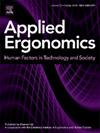Different forms of fablab organization and their impact on collaboration and innovation
IF 3.1
2区 工程技术
Q2 ENGINEERING, INDUSTRIAL
引用次数: 0
Abstract
The aim of this paper is to identify some of the characteristics of innovation and collective work in different fablab organizations. We first define fablabs through a review of literature, situating related questions in the field of ergonomics and focusing our point of view on individual and collective activity. Secondly, we show how the results of our qualitative analyses (performed on data from interviews and observations of fablab managers, users, and projects from 13 fablabs) reveal 3 main types of fablab organization: community-oriented fablabs, academic fablabs and industrial fablabs, in which different activities are carried out. Fablab activity depends on lab users and the type of design projects carried out. The discussion will focus on the fablab organization findings, including the links between design/innovation project work, collective work and evolving rules, and how all of these aspects might direct activity-centered ergonomics research and actions in the future.
不同形式的实验室组织及其对合作与创新的影响。
本文的目的是找出不同实验室组织中创新和集体工作的一些特点。我们首先通过对文献的回顾来定义实验室,将相关问题置于人体工程学领域,并将视角聚焦于个人和集体活动。其次,我们将展示定性分析的结果(通过对 13 家实验室的管理人员、用户和项目进行访谈和观察得出的数据)如何揭示出三种主要的实验室组织类型:社区型实验室、学术型实验室和工业型实验室,在这些实验室中开展着不同的活动。实验室的活动取决于实验室用户和设计项目的类型。讨论将集中于实验室组织的研究结果,包括设计/创新项目工作、集体工作和不断演变的规则之间的联系,以及所有这些方面如何指导未来以活动为中心的人体工程学研究和行动。
本文章由计算机程序翻译,如有差异,请以英文原文为准。
求助全文
约1分钟内获得全文
求助全文
来源期刊

Applied Ergonomics
工程技术-工程:工业
CiteScore
7.50
自引率
9.40%
发文量
248
审稿时长
53 days
期刊介绍:
Applied Ergonomics is aimed at ergonomists and all those interested in applying ergonomics/human factors in the design, planning and management of technical and social systems at work or leisure. Readership is truly international with subscribers in over 50 countries. Professionals for whom Applied Ergonomics is of interest include: ergonomists, designers, industrial engineers, health and safety specialists, systems engineers, design engineers, organizational psychologists, occupational health specialists and human-computer interaction specialists.
 求助内容:
求助内容: 应助结果提醒方式:
应助结果提醒方式:


